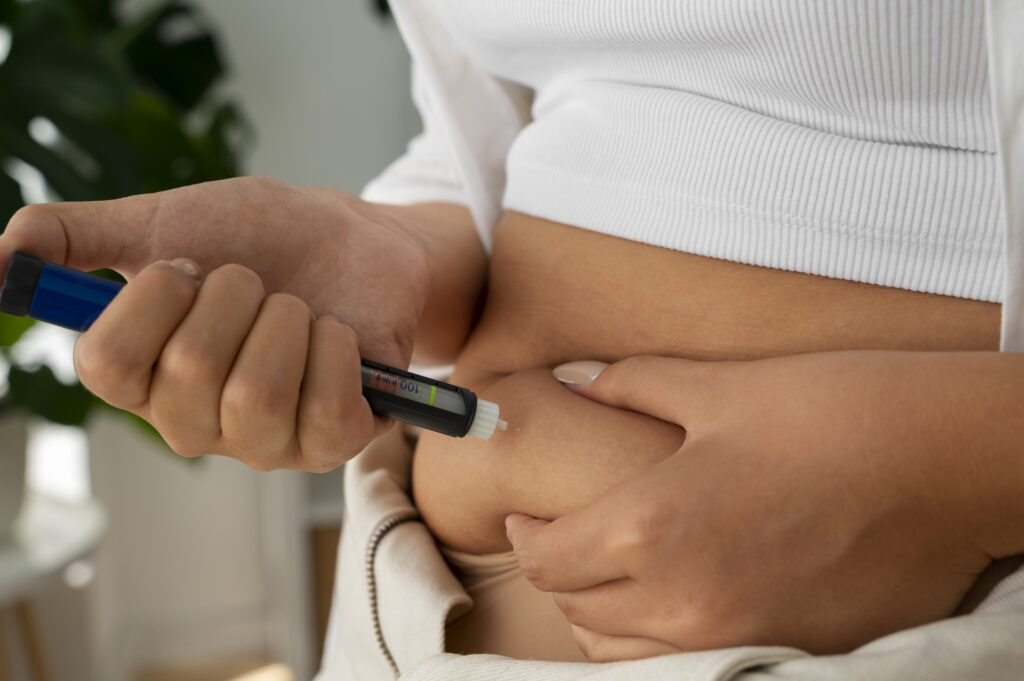
Prediabetes is a silent warning. It’s a red flag your body raises before type 2 diabetes sets in. And one of the biggest triggers behind it is obesity. But how exactly does being overweight lead to blood sugar problems? Let’s break it down in a simple, easy-to-understand way.
What Happens Inside the Body?
Insulin is a hormone released by the pancreas. Its job is to help sugar (glucose) move from your blood into your cells. Your cells then use this sugar for energy. When everything works smoothly, your blood sugar stays under control.
But in people who are overweight or obese, this process can get disrupted. The body’s cells, especially those in the muscles, liver, and fat tissues, stop responding properly to insulin. This condition is called insulin resistance.
To compensate, your pancreas pumps out more insulin. At first, this works. But over time, the pancreas can’t keep up. Your blood sugar starts to rise. That’s when prediabetes begins. If it continues unchecked, it can turn into type 2 diabetes.
Why Does Obesity Trigger Insulin Resistance?
Obesity, especially visceral fat (fat around the organs), plays a key role. Here’s how:
a. Fat cells can become dysfunctional: They release inflammatory chemicals and free fatty acids into the blood. This creates stress in the body and disrupts insulin signaling.
b. Muscle tissues get overloaded: Muscles take up around 70% of glucose from the blood. But when you’re inactive and overeat, muscle tissues get overwhelmed and can’t keep up. Excess sugar goes to the liver instead.
c. The liver makes more fat: This process is called de novo lipogenesis (DNL). It creates more free fatty acids, which get stored in organs like the liver and muscles, a condition known as ectopic fat deposition.
d. Fat storage in the wrong places: When fat builds up where it shouldn’t (like the liver, muscles, or pancreas), it disrupts the normal functioning of those organs. That adds to insulin resistance.
This cycle keeps worsening until the pancreas gets tired and insulin levels can’t meet the body’s needs anymore.
Genetic and Acquired Causes of Insulin Resistance
While lifestyle plays the biggest role, genetics also contribute. Causes of insulin resistance can be:
Acquired Causes (Most Common):
- Excess fat, especially visceral fat
- Aging
- Inactivity
- High-calorie diets
- Steroid medications
- High salt intake
- Lipotoxicity (toxicity due to fat accumulation)
Genetic Causes (Less Common):
- Myotonic Dystrophy
- Rabson-Mendenhall Syndrome
- Lipodystrophy
- Type-A and Type-B Insulin Resistance syndromes
How Do Different Tissues React?
a. Adipose (Fat) Tissue: In insulin resistance, fat cells keep breaking down fat even when they shouldn’t. This increases free fatty acids in the blood, worsening the problem.
b. Muscle Tissue: Muscles are the biggest users of glucose. When they become insulin resistant, glucose builds up in the blood, and the excess gets stored as fat.
c. Liver: The liver starts converting extra sugar into fat (DNL) and also fails to stop breaking down glycogen (stored sugar). This raises blood sugar levels even more, especially after meals.
All these tissues work together, when one goes off track, the others follow.
How Is Insulin Resistance Diagnosed?
The gold standard is the Hyperinsulinemic-Euglycemic Clamp for assessing insulin sensitivity. It measures how much glucose your body needs to balance high insulin levels. But this is mostly used in research because it’s complicated.
In regular practice, simpler ways include:
1. Blood tests for high triglycerides and low HDL cholesterol
2. Waist circumference and BMI
3. Identifying signs of Metabolic Syndrome, like:
- Waist over 32” for women or 40” for men
- Triglycerides ≥150 mg/dL
- HDL <40 mg/dL (men) or <50 mg/dL (women)
- High blood pressure
- Fasting glucose ≥100 mg/dL
RELATED:
How Can It Be Managed?
1. Lifestyle Changes (The Most Effective Way)
- Weight Loss: Just losing 7% of body weight can reduce the risk of diabetes by nearly 60%!
- Exercise: Helps muscles use up glucose, even without insulin
- Balanced Diet: Whole foods, low sugar, less saturated fats
- Reduce Salt: Too much sodium can worsen insulin resistance.
Studies like the Diabetes Prevention Program (DPP) strongly support lifestyle intervention as the best solution.
2. Medications (Only Under a Doctor’s Supervision)
If lifestyle alone isn’t enough, doctors may prescribe medicines. But they should never replace healthy habits.
What Are the Complications?
If not managed effectively, insulin resistance and prediabetes can lead to:
- Type 2 Diabetes
- Kidney damage (Nephropathy)
- Eye damage (Retinopathy)
- Nerve damage (Neuropathy)
- Heart Disease and Stroke
Final Thoughts
Obesity and insulin resistance form a dangerous cycle that can silently push your body toward type 2 diabetes. But the good news? It’s manageable. With the right knowledge, commitment to a healthy lifestyle, and regular check-ups, you can take control.
The journey starts with awareness. Stay active. Eat well. Monitor your health. Small changes can make a big difference in preventing prediabetes and leading a healthier, fuller life.